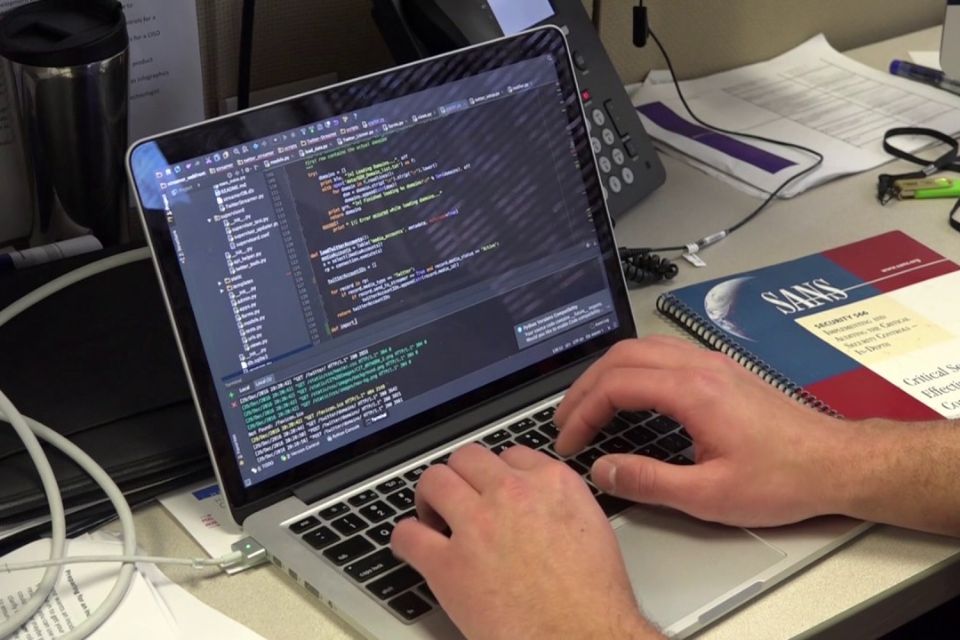What is Triangulation in Research?

In research, triangulation refers to addressing a research subject through several datasets, techniques, hypotheses, and investigators. It’s a research approach that can help you improve your results’ validity and trustworthiness.
Triangulation in research is most typically employed in descriptive studies, although it’s also utilized in quantitative studies. When doing mixed methods research, methodological triangulation is a must.
Triangulation in research: Examples
- Qualitative research:
In detail, you interview relevant stakeholders, like mothers, educators, and students.
- Quantitative research:
You conduct eye-tracking research and take the help of three researchers to analyze the results.
- Mixed-methods study:
You do a quantitative survey, then a few organized (qualitative) discussions.
Triangulation in research: The different types
Triangulation in research may be divided into four categories:
- Data triangulation: Combining data from various periods, locations, and individuals
- Investigator triangulation: Gathering or analyzing data with the help of numerous researchers
- Theory triangulation: Employing a variety of theoretical views in your study
- Methodological triangulation: Using many methods to tackle the same subject
Using an illustration, we’ll go over the four forms of triangulation in research. The illustration is based on a real-life study.
Example:
You investigate what motivates individuals to act cooperatively rather than selfishly. For example, you want to know what encourages people to collaborate with others in a team setting.
Methodological triangulation
When you apply methodological triangulation, you employ several methodologies to tackle the same research subject.
It is among the most prevalent form of triangulation in research, and it occurs when researchers blend quantitative and qualitative research approaches in one study.
Methodological triangulation in research: Example
In your research, you employ behavioural, survey, and neurological data to create a holistic understanding of what inspires individuals to cooperate.
You recruit people to play team games in a behaviourally regulated lab experiment and keep track of their results. You also conduct a poll to get information on how they cooperate in their everyday lives. Ultimately, you conduct functional magnetic resonance imaging (fMRI) scans to determine the brain underpinnings of collaboration.
Methodological triangulation in research is advantageous since it eliminates the limitations and biases of relying on a single research approach.
Data Triangulation
To address your subject of study, you employ numerous data sources in data triangulation. You can gather data at different intervals, in different places, and with different individuals.
Data triangulation in research: Example
Over eight months, you acquire and evaluate information from a survey of 130 American university students to better understand the motives underlying cooperative conduct. The test is then repeated with similar samples from other parts of the globe.
To test your theory with a larger sample, you gather data from students in Italy and Japan.
Your conclusions are more generally applicable to other scenarios if you gather data from various samples, locations, or periods.
Investigator triangulation
Numerous observers or investigators are involved in investigator triangulation in research to gather, organize, or evaluate data independently.
Investigator triangulation in research: Example
You enlist the help of several observers to classify the activities of your respondents for your behavioural data. Then, you give them training courses and a handbook to study to code behaviours similarly.
They examine and markdown any cooperative behaviour in video footage of your participants competing in team games in pairs. You double-check that their code sheets match up to guarantee good interoperability.
They also re-calibrate how they code behaviours regularly to ensure uniformity.
Observer bias and other experimental biases can be reduced by using investigator triangulation in research.
Theory triangulation
Triangulating theory entails using multiple distinct theoretical perspectives in your research rather than tackling a study subject from a single theoretical standpoint.
Theory triangulation in research: Example
You think there are two opposing motivating explanations for why individuals cooperate.
- People collaborate because they want to feel good about themselves.
- People collaborate to prevent feeling awful, not to avoid feeling guilty.
When people collaborate, you can use fMR recordings to see more brain activity in reward-related regions or guilt-averse regions.
One method of theory triangulation in research is to test opposing theories. Theory triangulation can assist you in understanding a study topic from several viewpoints or reconciling data inconsistencies.
Triangulation in research: Purpose
Triangulation in research is a technique researchers use to gain a more comprehensive view of a study subject. Triangulation can also aid with credibility and validity issues.
To double-check information
For detailed analysis, it’s critical to collect high-quality data. However, when you have material from one origin or researcher, determine if the data is reliable.
However, if data from numerous sources or researchers agree, you might be more confident with its accuracy.
Credibility refers to how certain you are that your results are accurate. Your findings will be more trustworthy if your data overlap or concur with one another.
To get a full picture.
You may use triangulation in research to better grasp your study topic.
You invite biases in your study if you depend just on one source of data, technique, or researcher. For example, when only one investigator gathers data, observer bias might emerge. Likewise, relying solely on one approach may put you at a disadvantage due to the technique’s inherent weaknesses and limits.
Example:
To investigate your major issue of cooperative behaviours, you employ three distinct methodologies in your research:
- Observations of behaviour in a lab context
- Participants’ self-reported survey results commenting on their daily life
- Throughout a cooperative task, collection of brain data from an fMRI scanner.
Whether directly or indirectly, each of these approaches evaluates multiple elements of cooperative behaviour.
When you wish to convey the intricacy of real-world occurrences, triangulation in research comes in handy. You get insights into the study topic from numerous viewpoints and levels by diversifying your data sources, hypotheses, and procedures.
To improve the validity of the data.
Validity refers to how well a methodology measures what it claims to measure.
Validity triangulation in research may improve the validity of your study. You can mix complementary strategies that accommodate each other’s limits because each technique has its benefits and drawbacks.
Example: Combining methods
Using behavioural observations has drawbacks since people aware that they are being observed may respond in manners they would not normally. Observers’ views of behaviours may also be skewed.
On the other hand, survey results give more insight into everyday routines beyond the lab, though it may be skewed because it is self-reported.
Lastly, fMRI data can reveal more about underlying brain systems without any human intervention. However, this sort of information is only helpful for your study when it is paired with others.
You may mitigate one method’s weaknesses with the virtues by integrating all three methods.
Triangulation in research: Pros and Cons
Triangulation, like any research methodologies, offers benefits and drawbacks.
✔ Bias is reduced.
When you triangulate data, methodologies, researchers, or hypotheses, you can eliminate the bias by relying on a single point of view in your study. When you apply triangulation in research, you’ll gain a well-rounded view of the study issue.
✔ Establishes integrity and accuracy
Combining multiple methodologies, data sources, and ideas improves your research’s accuracy and reliability. When you collect data from many viewpoints and approaches, you may be more confident that it accurately reflects actual life.
x Time-consuming
Triangulation takes a long time and requires a lot of effort. To address one research topic, you’ll have to balance many databases, sources, and approaches.
The form of study frequently necessitates the participation of a multidisciplinary team and a higher expense and effort. Depending on your time constraint and research requirements, you’ll need to consider your alternatives and strike a compromise.
x Inconsistency
Data from many resources, researchers, and methodologies may not always align to offer you a complete image. In addition, your data might be incongruent or contradictory.
It does not always imply that your findings are illogical when using triangulation in research. Instead, you’ll have to delve deeper to figure out why your data is contradicting. These discrepancies might be frustrating, but they can also result in new study directions.
Frequently Asked Questions
What is triangulation research?
Ans. In qualitative research, triangulation uses various methodologies or data sources to build a thorough knowledge of topics.
What are the different types of triangulations?
Ans. The different types of triangulations include Methodological triangulation, Data triangulation, Investigator triangulation and Theory triangulation.
What is the importance of using triangulation in research?
Ans.
- Reduce prejudice caused by using a particular method, theory, or researcher.
- Increase the validity of your research by using diverse techniques to explore the same issue.
- Give you a clear understanding of the research issue to establish credibility.
Total Assignment Help
Incase, you are looking for an opportunity to work from home and earn big money. TotalAssignmenthelp Affiliate program is the best choice for you.
Do visit :https://www.totalassignmenthelp.com/affiliate-program for more details
Total Assignment help is an assignment help Online service available in 9 countries. Our local operations span across Australia, US, UK, South east Asia and the Middle East. With extensive experience in academic writing, Total assignment help has a strong track record delivering quality writing at a nominal price that meet the unique needs of students in our local markets.
We have specialized network of highly trained writers, who can provide best possible assignment help solution for all your needs. Next time you are looking for assignment help, make sure to give us a try.
Looking for Assignment Help from Top Experts ?
Get the best Assignment Help from leading experts from the field of academics with assured onetime, 100% plagiarism free and top Quality delivery.



